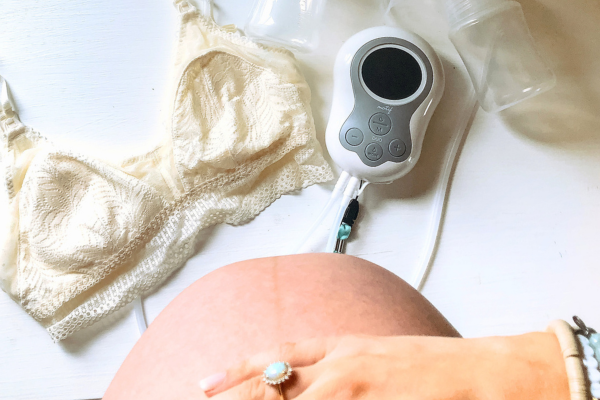Natural Birth
One of the most common questions I get as a midwife is: what are the best comfort measures to use during labor for someone who wants a natural birth? One basic truth of labor is that it is a lot of hard work and everyone who is planning an unmedicated birth is trying to figure out methods that will help them work through the labor surges. And I’m so happy to be able to share this information with you! Another birth truth is that pain management in labor doesn’t have to mean medications or an epidural, it can also mean incorporating movement, aromatherapy, and other support people to help you cope with the pain and intensity of labor contractions. Everyone’s birth will be different but having a positive birth experience depends, in part, on feeling capable of the work you need to do. So let’s talk about some pain relief options that are available for people who desire to give birth without medications.
Breathing Techniques
Using the rhythm of your breath to help you stay focused during contractions is one of the best and most commonly used skills that I see pregnant women use during birth. Taking a deep breath as you start a new surge and focusing on your exhale as the contraction builds can help you manage what you’re feeling in your body.
There’s good scientific evidence for this one, too! (1) Deep breathing helps to keep us relaxed and calm, which is where you want to be in labor. If you get overwhelmed by the process, it can put your body into “fight or flight” mode, which will intensify all of your physical sensations because it’s one of the ways your body protects you when there is danger. when you’re in fight or flight mode, you’re working against yourself in labor so taking deep breaths will allow your body to relax and do the work of labor more efficiently.
Movement Tips
Motion is the lotion for birth! A recent study showed that the most space was created for the baby when the birthing person was in between positions, so movement is the best way to help your baby navigate the space! (2) Have your support people remind you to change positions every 20 to 30 minutes. You can create different positions with your hip and leg positions while you’re standing, sitting, kneeling, or lying down. If you’re using a birth ball or peanut ball, try rocking or swaying on them even while you’re having contractions. When you’re in labor, it can be normal to want to stay still and tense up against the intensity of the contractions, but if you can find your rhythm and keep moving, you’ll be helping yourself manage the labor pain and you’ll be helping your baby move lower on their way to being born!
Relaxation
As I mentioned earlier, tensing up against the intensity of labor can be a normal response, but it doesn’t help manage the pain and it inhibits the progression of labor—so it’s not what you want to do! Taking a hypnobirthing class as part of your birth preparation will teach you relaxation techniques to help you stay focused during your labor surges. Relaxation is essential to helping your baby work their way through your pelvis.
If you are tensing your muscles against the sensations, it can hold your baby up and not allow it to descend into your pelvis and through your birth canal.
Massage or heat can also help you stay relaxed during labor. Having your doula or partner massage your lower back, hips, and thighs can help you keep those tissues loose and relaxed as the baby gets lower in your birth canal. You can also try putting a heating pad on your lower back to promote relaxation and reduce tension—this can be particularly helpful if you are experiencing back pain with your contractions.
Hydtration
Water is one of my favorite tools to use during birth. I find it to be one of the most effective pain relief techniques, especially as labor progresses. Both the shower and the bath are great ways to use warm water for pain relief. Some laboring women will let the shower spray on their lower back or their abdomen. If you are in the bath or birth pool, your labor support people can pour water over your back or abdomen with a cup. Just remember to keep moving, even while you’re in the water!
Sometimes the water will get people so relaxed that they’ll forget to keep moving, but you still want to incorporate movement in the shower or birth pool. And you don’t have to be planning a water birth to use this pain relief technique during labor! Water is a great tool to use, even if your birth plan is for you to get out before your baby is born.


TENS Unit
A Transcutaneous Electrical Nerve Stimulation unit, aka TENS machine, can be another great tool for people who want a natural childbirth. This device has pads that adhere to your skin and use electrical waves to stimulate your nerves. It’s a highly effective pain relief technique during birth and works because of the Gate Control Theory of pain. The gate control theory says that non-painful sensations can block the body and brain from registering a painful sensation. Think about if you were to burn your finger. Most of us have learned to put our fingers under cold water or to hold an ice cube. Putting something cold on our skin doesn’t make the skin any less burned, but it does keep us from feeling the pain of the burn! The same theory works during labor, if you have a non-painful sensation happening in your body, it can keep you from feeling the painful sensations.
Doula Support
I can’t talk about pain relief techniques for labor and not mention hiring a doula! Doulas are one of the most effective resources for helping you manage your pain and help your labor progress. If your goal is to have an unmedicated birth, the continuous support of a doula has been researched and proven to help you achieve that goal and to have a more positive birth experience. Doulas also reduce the use of medical interventions, like pain medications, reduce cesarean, or c-sections, improve breastfeeding rates, and improve maternal satisfaction. (3) If you’re unsure about having a doula at your birth, I always tell people to interview a few of them. You’ll either walk away from it and think that one of them would be a huge asset to your birth team or you’ll think, “Nah, I’m good.” Either way, it can give you peace of mind in making that decision.
While I would love to have included a fool-proof guide to getting rid of pain during labor, I just don’t know of a way to do that. Giving birth to a baby is a lot of hard work and most women will describe it as painful. But birth is still a natural, physiological process, and like one of my clients said to me recently, “Just because it’s hard doesn’t mean it’s not worth it.” I couldn’t agree more! If your goal is to give birth without pain medication or medical interventions I hope this article has given you some tools that you can incorporate into your birth plan. And when your birthing time comes, I hope your support people respect your preferences and help you navigate the journey ahead. Happy birthing!
References
- Magnon, V., Dutheil, F. & Vallet, G.T. Benefits from one session of deep and slow breathing on vagal tone and anxiety in young and older adults. Sci Rep 11, 19267 (2021). https://doi.org/10.1038/s41598-021-98736-9
- Siccardi, M., C. Valle, and F. Di Matteo, Dynamic External Pelvimetry Test in Third Trimester Pregnant Women: Shifting Positions Affect Pelvic Biomechanics and Create More Room in Obstetric Diameters.Cureus, 2021. 13(3): p. e13631.
- https://www.marchofdimes.org/find-support/blog/doulas-can-improve-care-during-and-after-childbirth
Information provided in blogs should not be used as a substitute for medical care or consultation.











